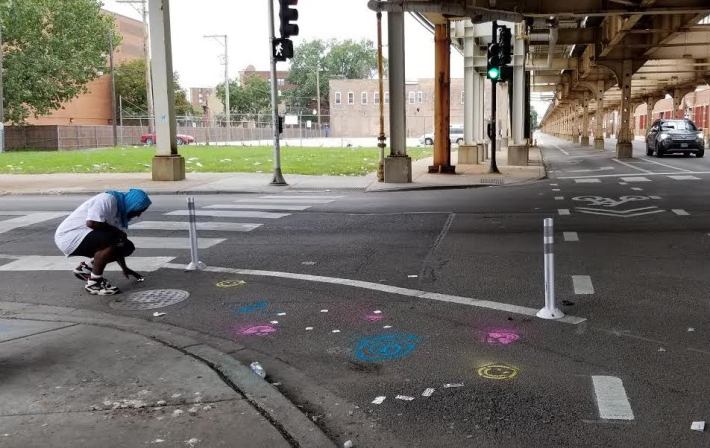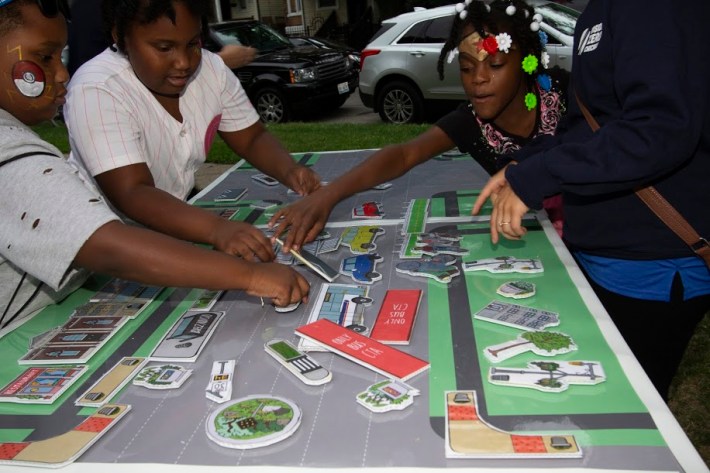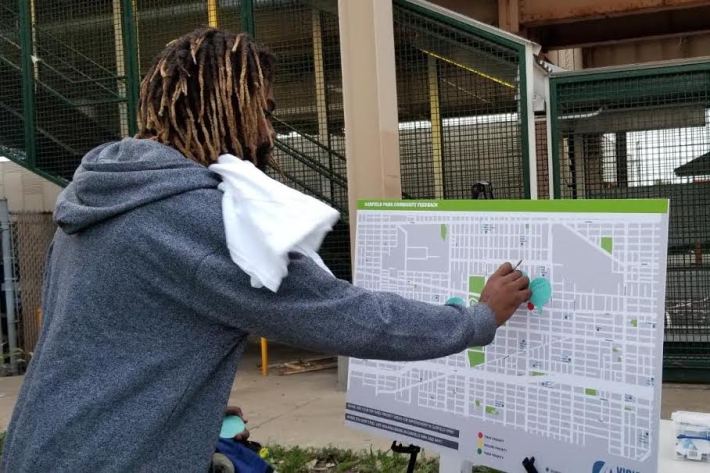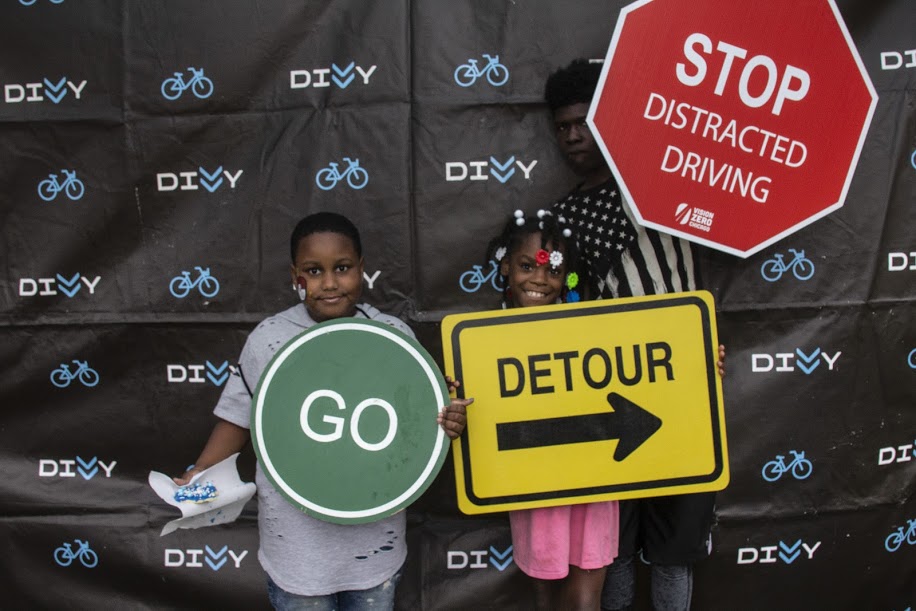Traffic safety is not always the easiest issue to engage with residents on, especially those with other pressing concerns, but Vision Zero Chicago seeks to change that.
Earlier this year, Vision Zero Chicago held a roundtable at the Garfield Park Conservatory and invited all the West Side organizations that they knew of.
“You may not always see traffic safety come up as a priority, but once we made the time and space for that conversation, it came up,” says Courtney Kashima, principal of Muse Community + Design and CDOT consultant.
Kashima says that the roundtable in February influenced their event series this summer on the West Side.
“We really wanted to have something that was more tangible so that people can really understand what we mean by safety and safe streets,” says Romina Castillo, a community planner at Muse and a Chicago Department of Transportation consultant. “So we organized three events in Austin, Garfield Park, and... North Lawndale.”
Castillo says they were interested in not just coming in as Vision Zero and just talking about traffic safety, but to be more embedded in what’s already happening in the neighborhoods and events that already have buy-in from community members. For one of their events they partnered with the Garfield Park Community Council and participated in one of their Light in the Night happenings, which take place every weekend from June to September at a lot at Lake and Kedzie.

“Some organizations do this kind of event, maybe at a vacant lot, just to encourage positive activities,” says Castillo referring to Light in the Night. “There’s a lot of shootings in the South and West sides especially in the summer. If you provide events like this, you can give kids safe places to play.”
Castillo says Vision Zero Chicago saw an opportunity to partner with Garfield Park Community Council, especially around the intersection of reducing interpersonal violence as well as traffic violence.
“So something that community members had already expressed was an interest in improving conditions for pedestrians at [Lake and Kedzie],” says Castillo. “You have people exiting the station, kids crossing the street to go to and from school, and the Hatchery site.”
With the feedback from local residents and Vision Zero Chicago, the Chicago Department of Transportation helped implement a "rapid delivery project," using street paint and flexible plastic posts to create curb extensions. “The purpose was to shorten the pedestrian crossing distance, improve visibility, and ensure slower car traffic," explains CDOT senior planner David Smith.
Smith also pointed out that Vision Zero has gathered information on high-crash corridors and high-crash areas in Chicago, and Lake Street is a high-crash corridor in a high-crash area.
“We’ve gotten positive feedback [to the bump-outs] so far," Smith says. "When an opportunity arises, we can potentially make it permanent.”
At the Light in the Night event on Sept 8, staff from Vision Zero Chicago educated people about the installation as well as gathering feedback on it. They also invited residents to help them make the installation colorful and eye-catching by decorating it with chalk and stencils.

“The way people were reacting to our chalking was very touching. People would stop by and ask what we were doing when we were painting the surface with different colors and with chalk,” Castillo says. “One man actually stopped and wanted to help decorate too. We want community members to have ownership over infrastructure, not just something that popped up overnight. That is a testament that they were feeling the ownership.”
Other interactive activities at the event included a Divvy 4 Everyone photo booth and a magnetic board, which let kids and families place different infrastructure elements on a streetscape, such as pedestrian refuge islands, curb extensions, and bus lanes.

“We wanted it to be very tactile,” says Kashima." And people can touch them and recognize them and manipulate them. We are trying to connect with people, educate them, but let them have some fun.”
There were also chalkboards at the events with questions residents could answer, such as “How can we make safer streets?” and “The West Side is the best side because…”

Kashima says Vision Zero Chicago hopes the event series and rapid delivery project will set a good example of how to engage residents on issues of traffic safety.
“We can’t go in and shove down people’s throats the idea of traffic safety, especially on neighborhoods in the South and West sides where that may not be their most pressing concern.”
Kashima adds that the key thing is showing how different public safety issues are interrelated, and finding ways to connect to existing work.
“When we talk about safe streets and partner with like-minded organizations, that’s more meaningful and impactful," she says. "There are interrelated issues. If someone doesn’t feel safe walking or going for a run, or riding their bike, they aren’t going to be out on the street. And if there aren’t people out on the street, it’s harder to bring businesses and jobs. And there are obviously health impacts. “
The next event in the series will be held in coordination with the North Lawndale 5k on Saturday, September 29.
![]()
Did you appreciate this post? Consider making a donation through our PublicGood site.





